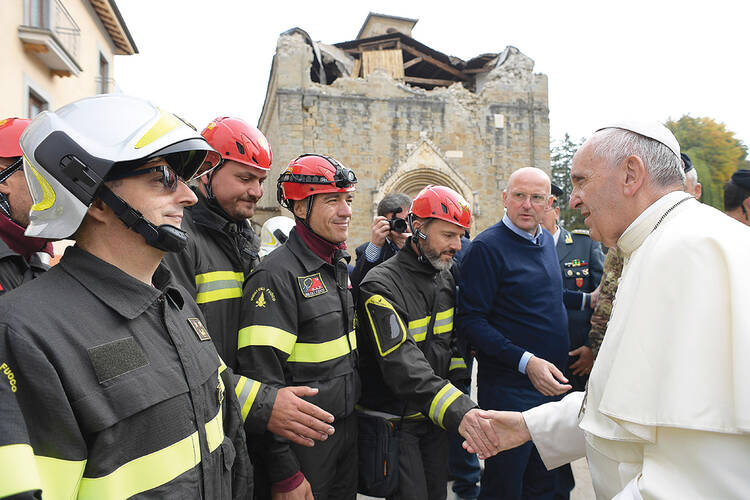Pope Francis made a surprise visit on Oct. 4 to the town of Amatrice in Italy, recently devastated by an earthquake, and told survivors there: “From the first moment” of the tremblor on Aug. 24, “I felt the need to be here.” • School of the Americas Watch supporters gathered on Oct. 7 in Nogales, straddling the border between Arizona and Sonora, Mexico, to demonstrate against “militarization” of the border region and the “criminalization” of refugees and migrants. • On Oct. 6, the U.S. Supreme Court reviewed the role of racial bias in a 1995 death penalty imposed on Duane Buck, who was sentenced to die after an “expert” witness testified that he was more likely to commit violent crimes in the future because he is black. • Approval of the climate change agreement negotiated in Paris last December reached the threshold of 55 countries on Oct. 5 when European nations, Canada, Bolivia and Nepal backed the accord. • Complaining that President Joseph Kabila of the Democratic Republic of Congo should not be seeking a third term and that it would not sign an accord that failed “to engage all political actors,” the Catholic Church pulled out of a national dialogue on Oct. 3 after opposition leaders boycotted talks.
News Briefs
Show Comments (
)
Comments are automatically closed two weeks after an article's initial publication. See our comments policy for more.
The latest from america
Los Angeles Archbishop José H. Gomez was one of several community leaders who joined to open the Family Assistance Program, aiding those affected by recent ICE raids.
On Friday, Pope Leo XIV issued a statement on the theme "Migrants, missionaries of hope."
In Steven Spielberg’s “Close Encounters of the Third Kind,” an ordinary electrician has a transcendent encounter—with U.F.O.s, not God.
Many of my acquaintances have given up “reading about something that didn't happen.” But fiction has long-term and concrete value, both mentally and socially.








